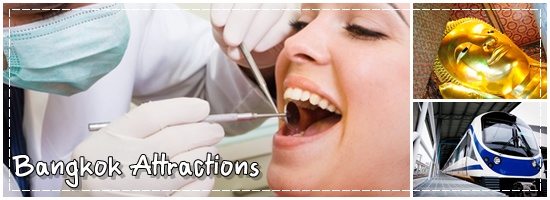
Wat Suthat Thepwararam

Founded at the center of Ratanakosin
Island, Wat Suthat is one of Thailand's
six most important temples. The temple
is featured as Bangkok's tallest Wiharn
and houses 14th century Buddha statue
from the Sukhothai period, Phra Sri
Sakyamuni.
The construction of Wat Suthat was first
undertaken by King Rama I, continued by
King Rama II and completed according to
plan by King Rama III, total of 27 years
to complete. Good planing from the
beginning earned it praise as 'the most
finely proportioned temple'.
The temple is essentially of two big
chapels, one almost square, opening
towards the north, while the other long
and narrow, opening towards the east and
situated to the south of the first
chapel. The northward edifice, Phra
Wiharn Luang, is a two-tiered roof
structure with front and back porches
which also have two-tiered roof. The
gable-ends of the Wiharn have the design
of 'Indra on the Erawan' while those of
the porches show 'Vishnu on the Garuda'.
Erected on a high terrace, the Wiharn is
located in the center of a courtyard
enclosed in a covered gallery of 156
Buddha images in meditation. The central
pair of door panels, which are now in
the National Museum, were designed and
initially carved by King Rama II. The
principle image, Phra Sri Sakyamini, is
a bronze image of the Buddha in subduing
the Mara attitude. It is considered one
of the largest Sukhothai period Buddha
images in existence with a knee span of
6.25 meters wide and a height of 8
meters. The remaining from the cremation
of King Ananda (Rama VIII) were interred
in the pedestal of this Buddha image.
The pillars and walls inside the Wiharn
have painting done in the reign of King
Ramma III showing people in the four
worlds or 'dveep' according to the 'Tebhumikatha'
and the jataka stories. This painting
are considered to be the most beautiful
work of the Ratanakosin period.
The great chapel lying on the South side
is a long building of 72 metres, the
longest in Thailand. Phra Phuttha
Trilokachet, the principle Buddha image,
was casted in alloy in the reign of King
Rama III. This subduing the mara image
has a knee span of 5.16 meters and a
8.36 meters height making it one of the
largest casted Buddha images of the
Bangkok period. In front is an assembly
of eighty great disciples.
In front of the temple is the Giant
Swing or Sao Ching Cha where a Brahmanic
ceremony had taken place until the early
20th century. In an annual ceremony to
celebrate the rice harvest that was
still observed just before World War II,
men used to ride on the Giant Swing and
try to grab a bag of silver coins
attached to a pole. Nowadays, only the
teak arch remains. |